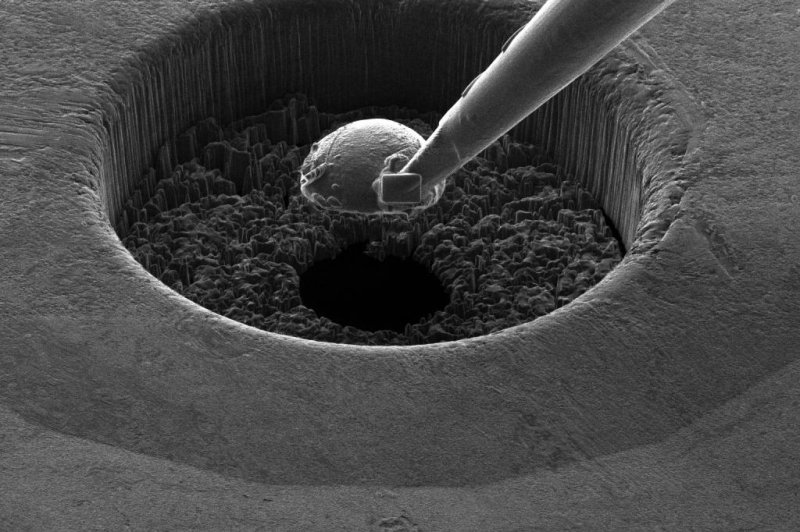BAYREUTH, Germany, July 11 (UPI) -- For German researchers, the new Focused Ion Beam microscope serves as both magnifier and milling machine. The so-called nano scalpel allows researchers to precisely prepare samples for observation.
"The microscope is not only able to examine microscopic defects, cracks or point-like corrosion sites underneath the surfaces of materials, but also to machine the surface of samples with extremely high precision, on a nanometer scale," Maxim Bykov, a researcher from the University of Bayreuth, explained in a news release.















